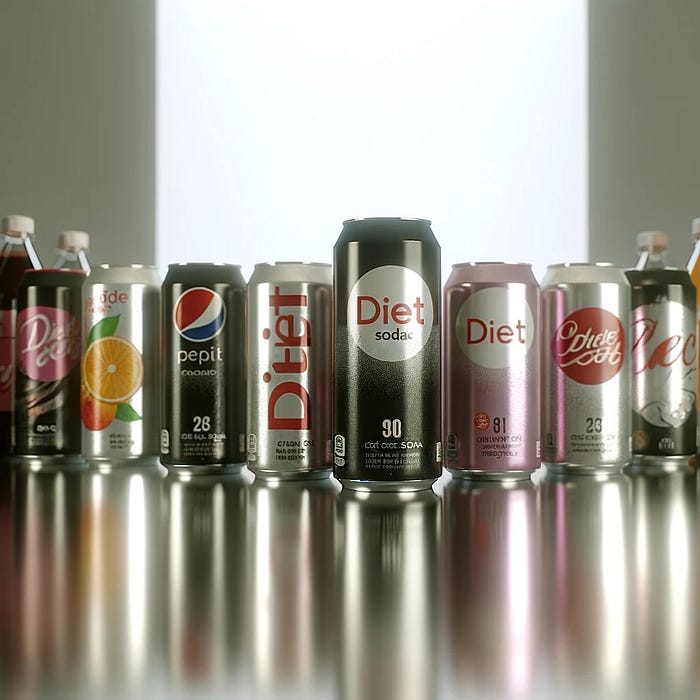1. TBHQ
2. Artificial colorant
3. BHA
4. Artificial sweeteners
5. Nitrates
What is TBHQ?
TBHQ, short for tert-Butylhydroquinone, is a synthetic antioxidant extensively employed in the food industry for its ability to prolong the shelf life of various products. By preventing the oxidation of oils and fats, TBHQ plays a pivotal role in maintaining the freshness, appeal, and taste of food items, ensuring they remain consumable for longer periods.
Common Uses:
This chemical additive is commonly found in a wide array of food products that many of us consume regularly. These include snacks, breakfast cereals, processed meats, and fast food items such as nuggets and French fries. The prevalence of TBHQ in these foods underscores its significance in the modern food industry, making it a staple in the production of processed foods.
Potential Health Concerns:
Despite its benefits in food preservation, TBHQ has raised several health concerns. Research suggests that it may impair the immune system, potentially compromising the body’s defense against diseases. Additionally, there have been instances of allergic reactions attributed to TBHQ, manifesting as skin irritations or respiratory issues in sensitive individuals. More worrying are studies indicating toxic effects on crucial organs like the kidneys and liver, which are essential for detoxification and metabolism. There’s also evidence pointing to a possible reduction in hemoglobin levels, a critical factor in blood responsible for transporting oxygen throughout the body.
TBHQ (tert-Butylhydroquinone) is commonly found in a wide range of processed and packaged foods due to its antioxidant properties that help extend shelf life. Here are five popular food items that often contain TBHQ:

- Fast Food French Fries: Many fast-food chains use TBHQ in the oil for frying foods like French fries to prevent rancidity and extend the oil’s usability.
- Microwave Popcorn: TBHQ is frequently added to the oil in microwave popcorn bags to keep the popcorn tasting fresh and to prolong shelf life.
- Crackers and Chips: Packaged snack foods, including crackers and chips, often contain TBHQ. It helps prevent the oils in these snacks from spoiling, maintaining their crunch and flavor.
- Frozen Prepared Meals: TBHQ is used in various frozen foods, including prepared meals and entrees, to maintain the quality and stability of the fats and oils during storage.
- Industrial Baked Goods: Packaged cakes, cookies, and pastries may contain TBHQ to keep them from going stale and to preserve their moistness and flavor over time.
Artificial Colorants in Food: A Rainbow of Concerns
The use of artificial colorants, such as Red 40, Brilliant Blue FCF, Sunset Yellow, and Tartrazine (Yellow 5), has become a staple in the food industry. These synthetic dyes are added to a myriad of products — from candies to beverages — to enhance their appearance and make them more appealing to consumers. While these vibrant hues may catch the eye, they carry a spectrum of potential health concerns that cannot be ignored.
The Impact on Behavior
Numerous studies have drawn connections between artificial colorants and behavioral issues in children, including hyperactivity and attention deficit hyperactivity disorder (ADHD). It appears that some children are particularly sensitive to these additives, exhibiting increased hyperactivity and difficulty concentrating after consuming foods laced with these dyes. This has prompted parents and healthcare professionals alike to question the safety of these colorful additives in our food supply.
Allergic Reactions and Beyond
Beyond behavioral concerns, artificial colorants have been linked to allergic reactions in some individuals. Though rare, these reactions can range from mild hives to severe asthma and other respiratory issues, posing a significant risk to those with sensitivities. The potential for these dyes to cause allergic reactions adds another layer of complexity to the debate over their use in our food.
Artificial colorants, such as Red 40, Brilliant Blue FCF, Sunset Yellow, and Tartrazine, are prevalent in a wide array of food products. Here are five popular food items that commonly contain these synthetic dyes:

- Sugary Cereals: Many brightly colored breakfast cereals targeted at children contain artificial colorants to make them more appealing. These cereals often use a mix of dyes to achieve vibrant colors.
- Candy and Sweets: A significant number of candies, including gummy bears, jelly beans, and hard candies, rely on artificial colorants to achieve their eye-catching hues. Red 40, Tartrazine, and other dyes are standard in this category.
- Soft Drinks and Fruit Beverages: Many non-alcoholic beverages, especially those marketed as fruit-flavored drinks, use artificial colorants like Brilliant Blue FCF and Sunset Yellow to enhance their visual appeal, suggesting a particular flavor.
- Snack Foods: Snacks such as chips, flavored tortillas, and cheese-flavored snacks often contain artificial colorants to make the food look more flavorful and enticing.
- Frozen Desserts and Ice Cream: Artificial colorants are used in many frozen treats, including popsicles and colored ice creams, to give them a vibrant, fun appearance that appeals to both children and adults.
Understanding BHA and BHT: Preservatives in Your Pantry
BHA (Butylated Hydroxyanisole) and BHT (Butylated Hydroxytoluene) are chemical preservatives widely recognized for their role in the food industry. These compounds are key to extending the shelf life of numerous food products by inhibiting the oxidation of fats and oils. This process is crucial for maintaining food freshness, preventing rancidity, and ensuring that products like fatty foods, snacks, processed meats, baked goods, breakfast cereals, and various others remain appealing over time.
Where Are They Found?
Commonly encountered in everyday food items, BHA and BHT are prevalent in foods rich in fats and oils. This includes French fries, snacks, processed meats such as salami and sausages, as well as baked goods, breakfast cereals, vegetable oils, margarine, and even some frozen meals. The extensive use of these preservatives underlines their importance in food preservation but also raises questions about their ubiquity in our diets.
Potential Health Concerns:
While BHA and BHT are effective in preserving food quality, their safety has sparked considerable debate. Concerns have been raised about their potential to cause sensitivities and allergic reactions in certain individuals. More critically, evidence suggests these chemicals could disrupt the endocrine system, responsible for regulating hormones in our bodies. Furthermore, their carcinogenic potential has been a subject of scrutiny, with animal studies hinting at a possible link to cancer development. Despite regulatory bodies deeming their levels in foods safe, the ongoing discussion warrants a closer look at their health impacts.
- French Fries and Snack Foods: BHA and BHT are often added to oil or the food itself to prevent rancidity in products like French fries, potato chips, and other fried snack foods.
- Processed Meats: Salami, sausages, and other processed meats contain these preservatives to maintain freshness and prevent the fats from becoming rancid.
- Baked Goods: Commercially produced breads, cakes, and industrial biscuits may contain BHA and BHT to keep them from spoiling and to maintain their flavor and texture over time.
- Breakfast Cereals: These antioxidants are added to breakfast cereals to preserve the fats in the cereals, ensuring they stay crunchy and fresh.
- Vegetable Oils, Margarine, and Frozen Meals: BHA and BHT are common in vegetable oils and margarine to prevent oxidation and in frozen meals to extend their shelf life.
The Bittersweet Truth About Artificial Sweeteners
Artificial sweeteners, such as aspartame, saccharin, sucralose, and cyclamate, offer a tantalizing promise: the sweetness of sugar without its caloric consequences. This has made them a popular choice among those looking to manage their weight or control blood sugar levels. However, the use of these sugar substitutes is not without controversy, as they have been linked to various health concerns.
Side Effects and Health Concerns
One of the most immediate side effects reported by some individuals is the onset of migraines and headaches following the consumption of artificial sweeteners. While the precise cause of these symptoms remains unclear, it suggests a sensitivity in certain individuals to these compounds.
Furthermore, there is growing evidence to suggest that artificial sweeteners could disrupt the gut microbiome, leading to inflammation — a known precursor to numerous diseases. This disruption could also contribute to gastrointestinal problems, including the leaky gut syndrome, which compromises the intestinal barrier and potentially leads to further health issues.
Cancer Risk: A Lingering Question
The question of whether artificial sweeteners pose a cancer risk has loomed over these compounds for decades. Initial studies, particularly concerning saccharin, raised alarms about a potential link to bladder cancer in lab animals. However, subsequent research and assessments by regulatory bodies have often found these results inconclusive or insufficient to establish a causal link in humans.

- Aspartame: Widely used in diet sodas, sugar-free gum, low-calorie desserts, and tabletop sweeteners, aspartame is known for its clean, sweet taste that closely mimics sugar. Despite its popularity, it has been the subject of health concerns, including potential links to headaches and neurological effects in sensitive individuals.
- Saccharin: One of the oldest artificial sweeteners, saccharin is found in a variety of products, including soft drinks, candies, toothpaste, and diabetic foods. It has a slightly bitter aftertaste and was once thought to be carcinogenic based on animal studies, but subsequent research has largely absolved it of these concerns for human consumption.
- Sucralose: Marketed under the brand name Splenda, sucralose is used in baking, as well as in a wide range of low-calorie and diet foods and beverages. It is made from sugar but is modified chemically to be free of calories. Sucralose is heat-stable, making it popular for cooking and baking.
- Cyclamate: Banned in the United States since 1969 due to cancer concerns, cyclamate is still used in over 100 countries, often in combination with other sweeteners to enhance sweetness in foods and beverages. Its status remains controversial, with ongoing debates about its safety.
- Stevia: Though not synthetic like the others, stevia is a natural sweetener derived from the leaves of the Stevia rebaudiana plant. It has gained popularity as a “natural” alternative to artificial sweeteners, used in beverages, baked goods, and as a tabletop sweetener. Stevia is considered safe by major health organizations and does not contribute calories or affect blood sugar levels.
Nitrates: A Double-Edged Sword in Food Preservation
Nitrates are chemical compounds frequently used in the food industry, particularly for preserving processed meats like sausages, bacon, and deli meats. Their primary role is to maintain the color of meats and prevent the growth of harmful bacteria, thus extending shelf life. However, the safety of nitrates has been a topic of debate due to the potential health risks associated with their consumption.
Conversion to Nitrites and Nitrosamines
While nitrates themselves are relatively harmless, the concern arises once they are converted into nitrites within the human body. Nitrites can further react under certain conditions, such as the acidic environment of the stomach or during the cooking process at high temperatures, to form nitrosamines. Nitrosamines are recognized as potent carcinogens, and their formation has been linked to an increased risk of various cancers, including those of the stomach, esophagus, and potentially the brain and thyroid.
Nitrates are commonly found in a variety of processed meats, contributing to their flavor, color, and shelf life. Here are five popular food items that frequently contain nitrates:
- Bacon: Known for its rich flavor and crisp texture, bacon is one of the most common sources of nitrates in the diet. Nitrates are used in bacon to cure the meat, inhibit bacterial growth, and maintain its appealing pink color.
- Hot Dogs: A staple of American cuisine, hot dogs are processed with nitrates to preserve their taste and prevent spoilage. Nitrates help hot dogs retain their characteristic color and flavor during storage.
- Salami: This cured sausage is another example of a meat product that relies on nitrates for preservation. Nitrates in salami prevent the growth of harmful bacteria and contribute to its distinctive taste and color.
- Ham: Cured ham, whether consumed as part of a meal or used in sandwiches, contains nitrates to extend its shelf life and enhance its pink hue, making it more appealing to consumers.
- Corned Beef: Traditionally cured with nitrates, corned beef relies on these compounds for its preservation, flavor, and color. Nitrates ensure the meat remains safe to eat and retains its characteristic texture and taste.
interested in more insights on fitness and supplementation? Dive deeper with us at shopdarkcave.com for more informative articles tailored to your fitness journey!
🌟 Liked What You Read? Show Some Love! 🌟
If this article opened your eyes 👀 to the world of food additives and their impact on health, hit that like button ❤️ and share it with friends and family 👫👭 to spread the word!
Got thoughts 💭 or personal tips 📝 on navigating the world of food additives? Drop a comment below! Let’s create a healthier community together 🌱.
Tap the like ❤️, share 🔄, and comment 💬 icons below to join the movement towards better food choices!
0 comments